A fantastic performance
Alexandra Kosteniuk’s showing at the first edition of the Women’s World Cup was nothing short of dazzling. A fixture in the elite women’s circuit for over 20 years, the Russian won the knockout event without ever needing to play a single rapid tiebreaker. In fact, she scored 10/12 points on her way to a memorable triumph — knocking out Deysi Cori, Pia Cramling, Mariya Muzychuk, Valentina Gunina and Tan Zhongyi before defeating top seed Aleksandra Goryachkina in the final.
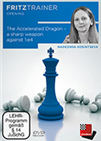 After 1.e4 c5 2.Nf3 Nc6 3.d4 cxd4 4.Nxd4 g6! leads to the so-called "Accelerated Dragon Defense". On this DVD the Russian grandmaster and top women player Nadezhda Kosintseva reveals the secrets of her favourite opening.
After 1.e4 c5 2.Nf3 Nc6 3.d4 cxd4 4.Nxd4 g6! leads to the so-called "Accelerated Dragon Defense". On this DVD the Russian grandmaster and top women player Nadezhda Kosintseva reveals the secrets of her favourite opening.Twenty years ago, a 17-year-old Kosteniuk reached the final of the 2001 Women’s World Chess Championship — a 64-player knockout event — where she lost to Zhu Chen in a drawless 8-game match. Seven years later, in 2008, she defeated Chinese prodigy Hou Yifan in the final of a similar event to become the women’s world champion, a title she kept until 2010. Now, at 37, she defeated the latest challenger to the world crown to get a spot in the Candidates Tournament, where she will fight against 7 highly motivated opponents to get the right to challenge Ju Wenjun in a match for the Women’s World Championship.
Kosteniuk’s stellar performance gained her a stunning 42.8 rating points, which prompted her to climb 10 spots in the women’s world ranking. Simply an extraordinary achievement!
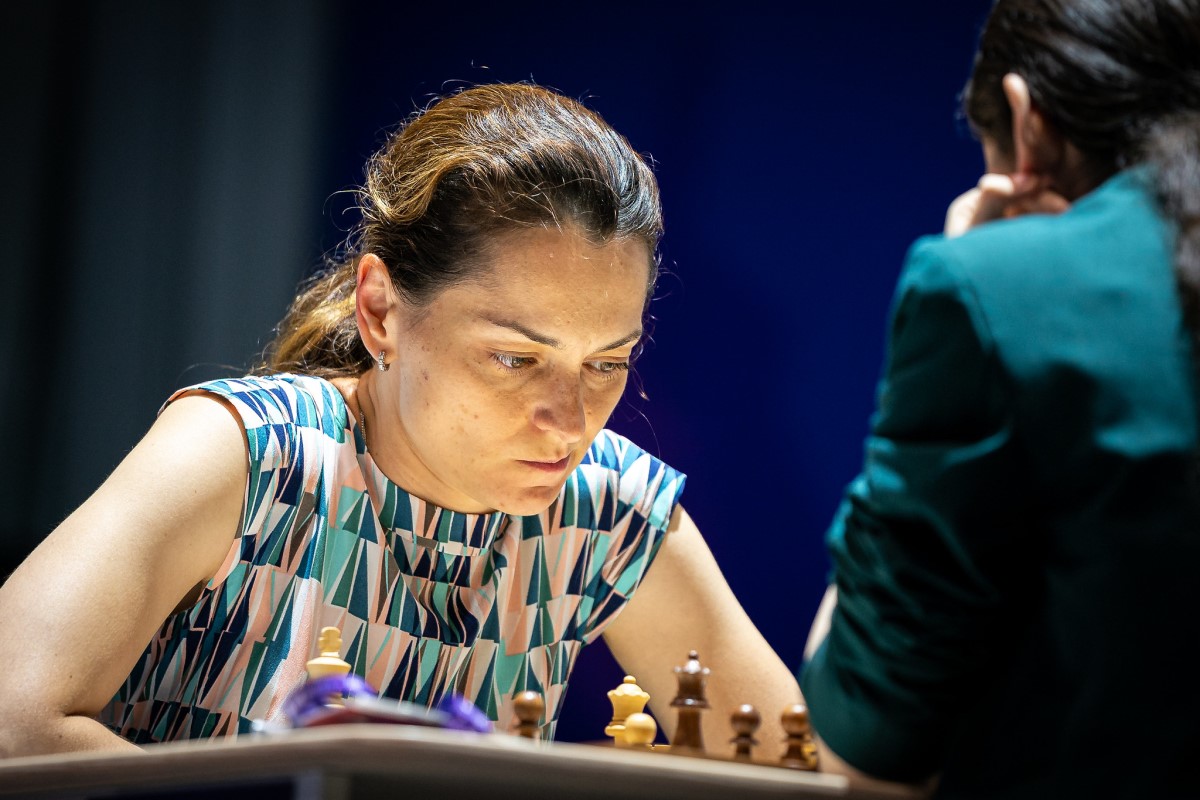
The woman of the hour — Alexandra Kosteniuk | Photo: Eric Rosen
Twice was the tournament’s champion in real danger of losing throughout the event — in her game with white against Gunina, and in Sunday’s first encounter of the final against Goryachkina. Remarkably, she came back from behind to score full points on both occasions!
Only needing a draw with white on Monday, the experienced grandmaster kept things under control against her younger compatriot. In desperate need of a win, Goryachkina tried to keep the game going in an opposite-coloured bishop endgame, only to soon find herself in a lost position:
As endgame specialist Karsten Müller points out in his annotations below, entering a race with 42...Bc7 is too risky for Black, while 42...Bxh2 would have led to a draw. Of course, Goryachkina had no option and looked for a last chance to provoke a mistake by her opponent.
Not long after, White had a completely winning position, but the compatriots nonetheless sensibly agreed to a draw, which meant Kosteniuk had won the demanding event that started exactly three weeks ago.
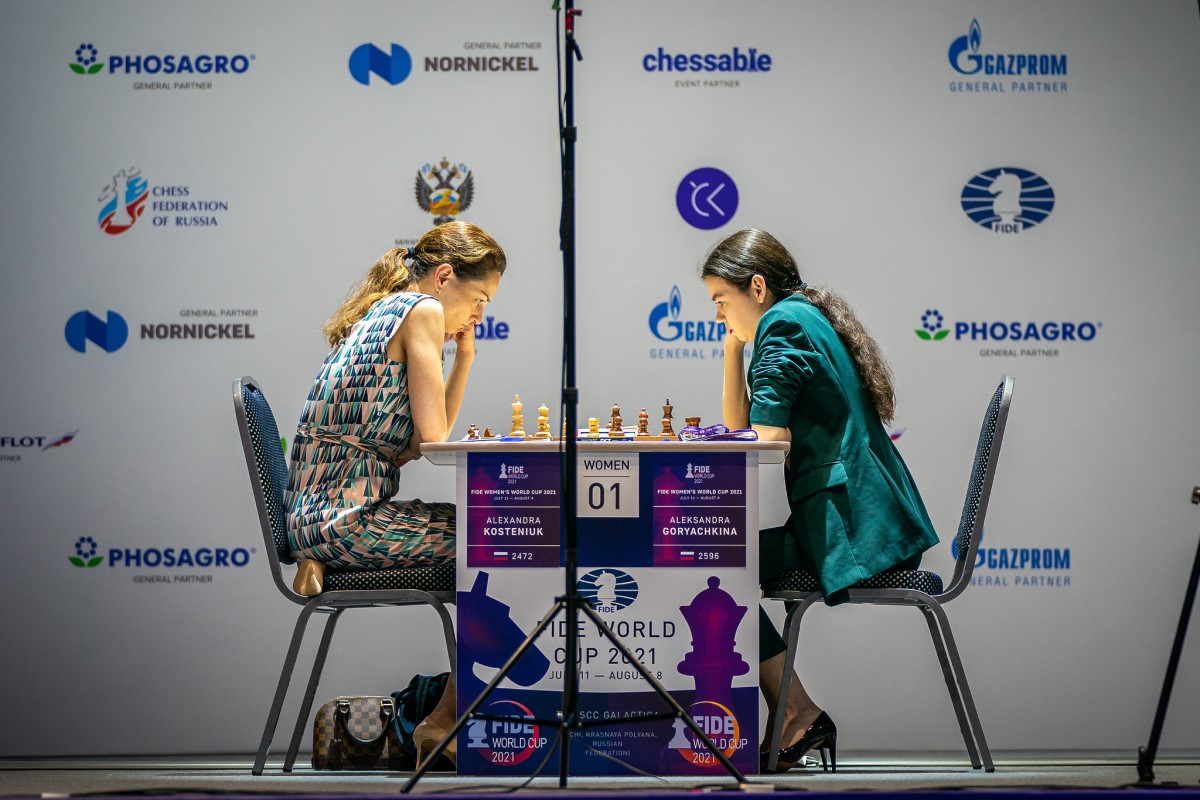
Russian stars Alexandra Kosteniuk and Aleksandra Goryachkina will face each other again in next year’s Candidates Tournament | Photo: Eric Rosen
Kosteniuk earned $50,000 for her efforts, while the runner-up took home $35,000. The winners of the third and fourth prizes are not yet decided, though, as Anna Muzychuk and Tan Zhongyi drew their second encounter in the match for third place and will decide who gets the extra $5,000 in a rapid and blitz playoff on Tuesday.
In game 2 of their confrontation, it was Tan who got the upper hand with the black pieces.
Engines give Black an advantage of about two pawns in the diagrammed position, but of course converting such a position is never easy against an experienced opponent. Muzychuk defended resourcefully until getting a 49-move draw.

On to the tiebreaks — Tan Zhongyi and Anna Muzychuk | Photo: Eric Rosen
Karjakin in the final
Meanwhile, in the open section, Sergey Karjakin secured a spot in the final and in the next edition of the Candidates Tournament by beating Vladimir Fedoseev with the white pieces. The former World Championship challenger won the World Cup in 2015, when he defeated Peter Svidler in a rollercoaster final match.
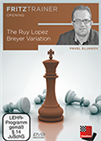 Pavel Eljanov explains in depth what Gyula Breyer already saw in 1911 and what became an opening choice of the likes of Kasparov, Kramnik, Anand or Carlsen. The Breyer Variation, which is characterised by the knight retreat to b8.
Pavel Eljanov explains in depth what Gyula Breyer already saw in 1911 and what became an opening choice of the likes of Kasparov, Kramnik, Anand or Carlsen. The Breyer Variation, which is characterised by the knight retreat to b8.The Russians played no fewer than 19 moves of theory out of a Ruy Lopez. Karjakin impressed the commentators with his encyclopedic memory while referring to his opponent’s 13th move:
A complex struggle ensued, and Fedoseev faltered on move 21.
21...Rf8 was inaccurate, as it allowed White to get a strategic advantage by force with 22.axb5 axb5 23.Rxa8 Bxa8 24.e6 Re8 (returning with the rook, admitting his mistake) 25.Ne5, and Karjakin was clearly in the driver’s seat.
Fedoseev tried to complicate matters by pushing his d-pawn two moves later, but that only increased White’s advantage. Once Karjakin advanced his own d-pawn to the fifth rank, it was clear that Black had no chance of surviving.
White’s connected central passers are too much to handle for Black. The game continued 31...Qg3 32.Re2 Qg5 33.Qd2 and Fedoseev resigned.
Karjakin will get a free day before the final match kicks off on Wednesday against either Carlsen or Duda. Fedoseev will be rooting for the world champion to make it into the final, as that will grant him a second chance to reach the Candidates, in a potential match for third place against Duda.
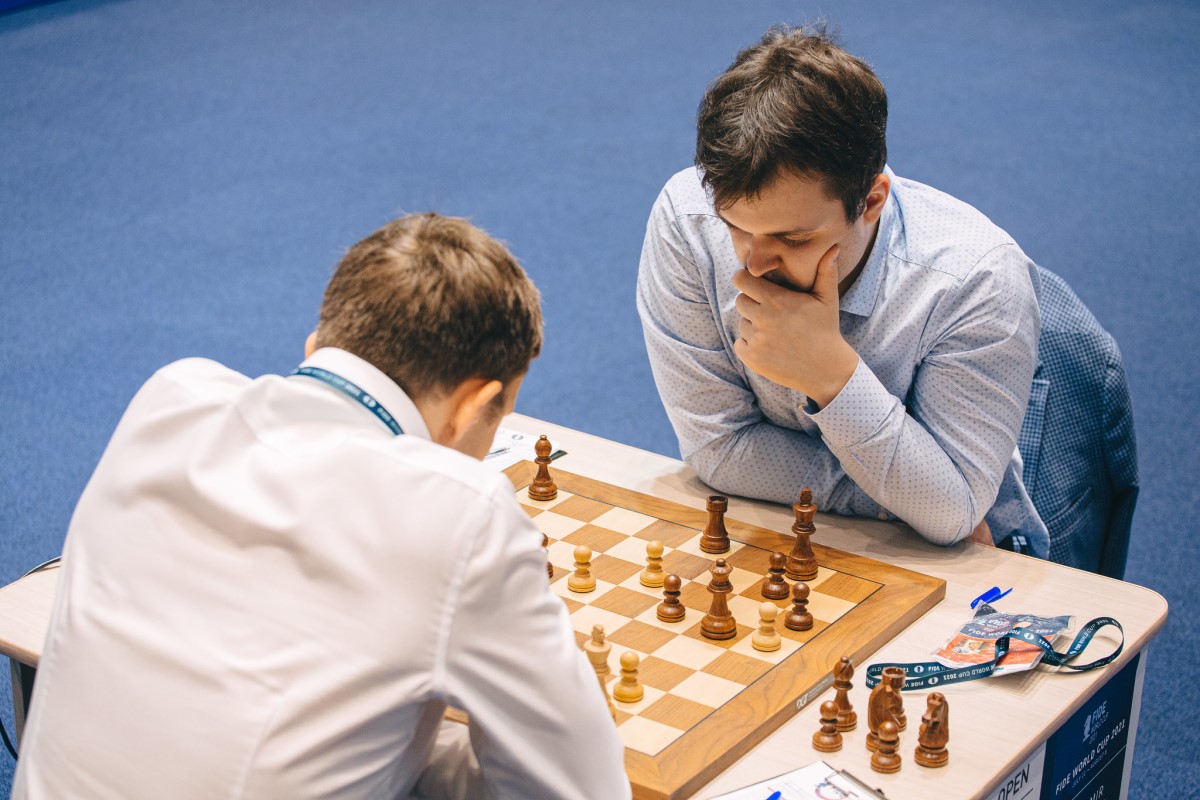
Vladimir Fedoseev might still qualify to the Candidates | Photo: Anastasiia Korolkova
Carlsen on the defensive
The second semifinal game between Duda and Carlsen was the longest encounter of the day. Out of a Ruy Lopez, the contenders followed theory until move 18, when Duda offered a queen swap, which was accepted by the world champion. By then, Carlsen had already given up a pawn, getting the kind of compensation Black usually gets out of the Marshall Gambit — much like in his first game of the quarterfinals against Etienne Bacrot.
Duda decided to try his hand in a position an exchange down with two pawns to the good.
Instead of playing 20.Re1, Duda gave up an exchange with 20.Nd2 Bxe4 21.Nxe4 Be7 22.Bxg5 (grabbing a second pawn) Bxg5 23.Nxg5. The Polish grandmaster knew that he would get to put pressure on his opponent from this position. However, Carlsen did not falter in defence and eventually got a 65-move draw, which means the match will be decided in Tuesday’s tiebreakers.
Check out Jon Speelman’s column showcasing Carlsen’s excellent endgame technique (the best ever?) or his column displaying the world champion’s attacking abilities.
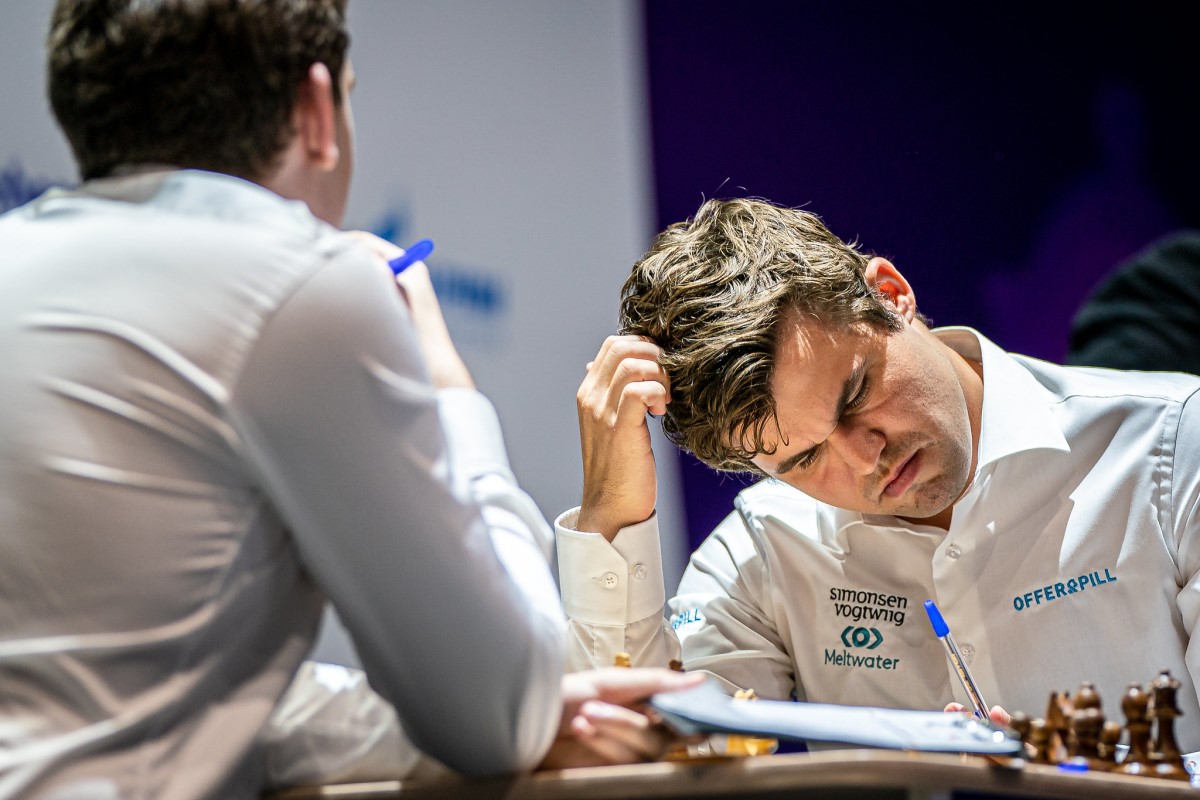
Defending a slightly worse ending — world champion Magnus Carlsen | Photo: Eric Rosen
Links




























